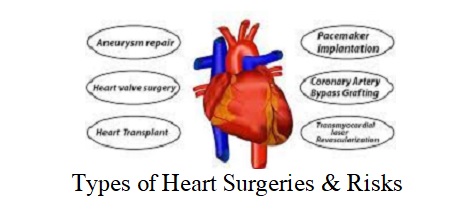Eye Cancer- Types, Causes, Symptoms, Treatment, Cost & Risk
Eye cancer is a rare condition that affects about 3,400 persons per year. It occurs in many different types of variants that start inside the eye or in tissues that surround it. Intraocular melanoma is the most common type, mostly affecting the choroid, the central region of the eye. Although tumors of the eye can grow in the orbit, eyeball, or adnexal tissues such as the eyelids, melanoma is of particular concern because it starts in cells that produce melanin. Go ahead to read about eye cancer treatment in details.
With improvements in treatment outcomes, the 5-year relative survival rate for eye melanoma is a promising 82%.The availability of treatments varies according to the location and size of the tumor, and prompt identification and treatment are essential to stopping the cancer’s spread.
What are the different types of Eye Cancer?
Several forms of eye cancer are categorized according to their origin, location, and cell types. Some of them are:
- Intraocular Melanomas: Melanocytes, the same cells that cause skin melanoma, are the source of intraocular melanomas, the most common type of eye cancer. The majority of eye cancers, known as uveal melanomas, begin in the uvea, the center portion of the eye. Subtypes include:
- Choroidal melanoma
- Ciliary body melanoma
- Iris melanoma
- Conjunctival melanomas
- Eyelid and Orbital Cancer: These types of cancers usually appear in the tissues that encircle the eye. Cancers of the orbital cavity originate inside the orbit and impact the muscles, nerves, and tissues that control eye movement. Adnexal cancer forms in tissues that support the affected area, such as the tear glands and eyelids. Common forms include basal cell carcinoma, which arises from basal skin cells, and squamous cell carcinoma, which originates from the uppermost layer of skin. Another kind is called rhabdomyosarcoma, and it develops inside muscles.
- Retinoblastoma: Children under the age of five are most commonly affected by this malignant tumor that arises from the retina in the back of the eye. This type of eye cancer is unique in that it is the most prevalent malignant tumor in children’s eyes to originate from within.
- Intraocular Lymphoma: Lymphomas, which are white blood cells, are the source of intraocular lymphoma, an uncommon type of B-cell lymphoma. This eye cancer, which primarily affects those over 50 or those with compromised immune systems, is linked to primary central nervous system lymphoma, which affects the brain and spinal cord among other regions of the central nervous system.
- Secondary Intraocular Cancers: Although they are not technically “eye cancers,” secondary intraocular cancers are caused by cancers that start in another location and spread to the eye. Breast and lung cancers are frequent causes, and the fact that metastases frequently arise in the uvea emphasizes how crucial it is to identify and treat these secondary cancers.
- Uveal Melanomas: The choroid or ciliary body of the uvea is the primary site of uveal melanomas, which are the most common type of cancer to develop within the eyeball in adults. The uvea is made up of the iris, choroid, and ciliary body. Skin melanocytes and choroid cells have similar properties.
- Conjunctival Melanomas: Extremely rare and severe tumors that originate in the conjunctiva are known as conjunctival melanomas. They can become potentially fatal because, unlike uveal melanomas, they may move through the blood and lymphatic system and endanger distant organs like the brain, liver, or lungs.
- Orbital and Adnexal Cancers: Cancers of the orbit affect the muscles, nerves, and related structures in the tissues that surround the eye. Adnexal cancers come in a variety of forms and are found in accessory structures such as the eyelids and tear glands. These include skin cancers such as basal cell carcinoma and squamous cell carcinoma.
What are the signs and symptoms of Eye Cancer?
Early-stage eye cancer often displays no symptoms at all, which highlights the significance of routine eye exams for early identification. Some of the common symptoms of eye cancer include:
- Painless Vision Loss
- Blurry Vision
- Floaters and Flashes
- Bulging Eye
- Eye Irritation
- Dark Spot in Iris
- Growing Lumps
- Changes in Eye Positioning
What are the causes of Eye Cancer?
Eye cancer is caused by complex genetic and environmental causes and is characterized by uncontrollably growing cells that eventually form tumors. Eye melanoma is more common in those with inherited mutations, such as those seen in the BAP1 gene. Uveal melanomas are caused by acquired DNA alterations, particularly in oncogenes like GNA11 or GNAQ in particular. Ongoing study attempts to identify probable connections, even though the precise environmental triggers are yet unknown. A detailed knowledge of the etiology of eye cancer is necessary due to the complex relationships between acquired mutations, genetic effects, and environmental factors. Although it usually affects the uvea, eye melanoma can also appear in the eyelid, conjunctiva, and eye socket.
What are the risk factors associated with Eye Cancer?
The risk of eye cancer is affected by multiple risk factors, such as:
- Age: All eye cancer diagnoses occur in adults over 50, except retinoblastoma, which strikes youngsters under five.
- Skin and Eye Color: Those with lighter skin and eyes, particularly those who identify as white, are more likely to develop eye cancer.
- Inherited Conditions: Certain conditions can increase risk, such as BAP1 tumor predisposition syndrome and dysplastic nevus syndrome.
- UV Exposure: Although further research is required, exposure to UV radiation from the sun or tanning beds may be risky.
- Genetic Mutations: The risk of eye melanoma may be elevated by specific genes that are inherited from parents to offspring.
- Family History: An elevated risk is associated with a family history of eye cancer, namely uveal melanomas.
- Moles and freckles: People who have different kinds of moles or freckles on their skin or within their eyes may be more likely to develop eye cancer.
- Race/Ethnicity: White people are more likely than People of Colour to have eye melanoma.
- Eye Area Abnormalities: A person’s chance of developing eye cancer may also be increased by diseases such as ocular melanocytosis or abnormal pigmentation.
What is the diagnosis of Eye Cancer in India?
In India, diagnosing eye cancer requires an advanced and specialized method usually carried out by medical specialists like ophthalmologists and ocular oncologists. Several painstaking steps are taken during the diagnostic process to achieve a precise diagnosis and rule out more common eye disorders. Some of them are:
- Eye Exam: An extensive eye examination performed by ophthalmologists is the first step in the diagnosis procedure. Doctors closely inspect the eye for abnormalities such as swollen blood vessels, black spots, and other irregularities using specialized instruments like slit lamps and ophthalmoscopes.
- Imaging: Many techniques for imaging are essential for the diagnosis of ocular malignancy. Tumor size and position can be determined with the use of ultrasounds, which use sound waves to provide detailed images of the inside of the eye. A dye is injected into the bloodstream during fluorescein angiography to improve blood vessel visualization during imaging. If there is a suspicion of cancer spread, further imaging tests such as PET scans, CT scans, MRIs, ultrasounds, and chest X-rays may be used.
- Biopsy: Different biopsy procedures are used in circumstances where a greater understanding of the composition of cancer cells is necessary. The procedures of Excisional Biopsy, Incisional Biopsy, and Fine Needle Aspiration Biopsy involve removing tissue samples from the tumor for examination in a lab.
- Blood testing: It is important to monitor liver function with blood testing, particularly when there is a concern about the spread of cancer. Treatment choices may be impacted by abnormalities in liver function, which could be a sign of metastasis.
- Molecular and Genetic Testing: These tests could be carried out for a more focused strategy. By identifying certain mutations in tumor cells, these tests help to guide treatment strategies and provide important information regarding the risk of metastasis.
What are the different stages of Eye Cancer?
Planning treatment and estimating a prognosis for eye cancer requires an understanding of its stages. This procedure is guided by two main staging systems: the Collaborative Ocular Melanoma Study (COMS) and the American Joint Committee on Cancer (AJCC) TNM. The AJCC TNM method assigns a stage (I to IV) depending on severity by taking into account tumor size (T), lymph node involvement (N), and metastasis (M). On the other hand, COMS classifies tumors into three sizes (small, medium, and large), which affects the choice of treatment. Clinical stages—ocular examinations, imaging, and biopsies—enable interdisciplinary cooperation for customized treatment.
What are the different treatment options for Eye Cancer in India?
A variety of customized solutions for treating eye cancer are available in India, taking into account the patient’s general condition as well as the location and size of the tumor. The common treatment options include:
- Careful Waiting: Doctors may advise keeping an eye on a patient’s condition before starting treatment in situations involving slow-growing tumors or circumstances where the diagnosis is unclear. This strategy is especially important in situations where there could be greater risks associated with treatment than benefits, such as the possibility of vision loss.
- Radiation Therapy:
- Brachytherapy: A tiny disc is implanted next to the tumor to deliver radiation and destroy cancer cells. It is a popular and successful treatment for melanomas of the eyes.
- External Beam Radiation Therapy (EBRT): With external beam radiation therapy (EBRT), radiation is directed at the tumor without coming into close touch. While precise, methods such as proton beam radiation therapy and stereotactic surgery might not be accessible everywhere.
- Surgery: When treating eye cancer, especially for tiny tumors that are limited to the eyeball, surgical procedures are essential. Some of the procedures are:
- Iridectomy: Partial iris excision; often performed for mild melanomas.
- Transscleral Resection: Excision of melanomas from the ciliary body or choroid.
- Enucleation: Total removal of the eyeball; advised in cases of big tumors or when maintaining eyesight is impractical.
- Orbital Exenteration: When cancer has spread outside of the eyeball, the eyeball and surrounding tissue are removed.
- Laser Therapy: By using concentrated heat from infrared light, laser treatments—like transpupillary thermotherapy (TTT)—destroy cancer cells. To stop recurrence, TTT can be used either alone or in combination with brachytherapy.
- Immunotherapy: Medication used in immunotherapy, such as tebentafusp, helps the immune system recognize and get rid of cancer cells. When cancer has spread or cannot be physically removed, this strategy is often used.
- Targeted Therapy: Patients with BRAF gene mutations may benefit from targeted therapy medications, which target particular flaws in cancer cells. Targeted therapy may be helpful for eye melanomas, despite cutaneous melanomas being more common in this case.
- Chemotherapy: Although not the first line of treatment for eye cancer, it is a possibility if all other options are exhausted or if the cancer spreads to other parts of the body.
What is the success rate of Eye Cancer Treatment in India?
The success rate of eye cancer treatment in India is an important aspect that reflects improvements in healthcare. Eye melanoma is a common form of eye cancer with a 5-year relative survival rate of 82%. This figure highlights the efficacy of treatments offered in India, with a focus on a variety of treatment methods, comprehensive staging, and early identification. Good results are a result of the cooperation of ophthalmologists, oncologists, and other specialists; this underscores the country’s dedication to providing excellent treatment for eye cancer with a positive prognosis.
What is the cost of Eye Cancer Treatment in India?
Treatment for metastatic eye cancer in India usually costs between $10,800 and $20,250. This estimate includes several treatment components, such as radiation therapy, surgery, diagnostics, and possible post-treatment care. The overall cost is influenced by various factors, including the type of cancer, the treatment plan selected, and the hospital. India is a viable choice for anyone looking for high-quality care at a relatively reduced cost because it is known for offering affordable medical solutions.
Top Hospitals for Eye Cancer Treatment in India
Several world-class hospitals in India that offer cutting-edge medical interventions and skilled oncology teams specialize in providing comprehensive treatment for eye cancer. To achieve the best possible patient outcomes, these hospitals place a high priority on state-of-the-art technology, individualized treatment, and a multidisciplinary approach. These esteemed hospitals offer top-notch treatment for eye cancer, and patients can take advantage of their experience and dedication to providing top-notch healthcare.
- Centre of Sight, New Delhi
- Artemis Hospital, Gurgaon
- Medanta – The Medicity, Gurgaon
- Fortis Memorial Research Institute, Gurgaon
- Bharti Eye Hospital, New Delhi
- BLK Super Speciality Hospital, New Delhi
- Eye Q Hospital, Gurgaon
- Indraprastha Apollo Hospital, New Delhi
- Kokilaben Dhirubhai Ambani Hospital, Mumbai
Best Doctors for Eye Cancer Treatment in India
People looking for specialized treatment for eye cancer may find highly skilled and experienced oncologists in India. These specialists are well-known for their skill in identifying and managing a range of eye cancers using cutting-edge methods and individualized care plans. These medical professionals, who are well-known for their dedication to their patients’ health, work in interdisciplinary teams to provide thorough and efficient care.
- Dheeraj Gupta – Marengo Asia Hospitals (formerly W Pratiksha Hospital), Gurgaon
- Vandana Khullar – Pushpawati Singhania Research Institute, New Delhi
- Subodh Kumar Sinha – Centre for Sight Eye Hospital, Sector 29, Gurgaon
- Col Satinder Singh Mann – Centre for Sight Eye Hospital, Sector 29, Gurgaon
- Dharitri Samantaray – Bharti Eye Hospital, New Delhi
- Hema Rawal – Centre for Sight Eye Hospital, Sector 29, Gurgaon
- Pratik Ranjan Sen – Apollo Hospitals, Greams Road, Chennai
- P Vijay Anand Reddy – Centre for Sight Eye Hospital, Banjara Hills, Hyderabad
- Jalpa Vashi – Manipal Hospitals Life’s On, Whitefield, Bangalore
- Deependra V Singh – Apollo Spectra Sheetla Hospital & Eye Institute Pvt. Ltd., Gurgaon
Contact Form
Attach Medical Report
Top Doctors & Surgeons in India
Why Choose Us

Personalized Care
24x7 Supports
Top NABH and JCI accredited Hospitals
Free Cost Estimation & Medical Opinion from Specialist
Get Free Tele/Video Consultation
Visa and Traveling Assistance
Post-surgery with Assistance in Follow-ups














